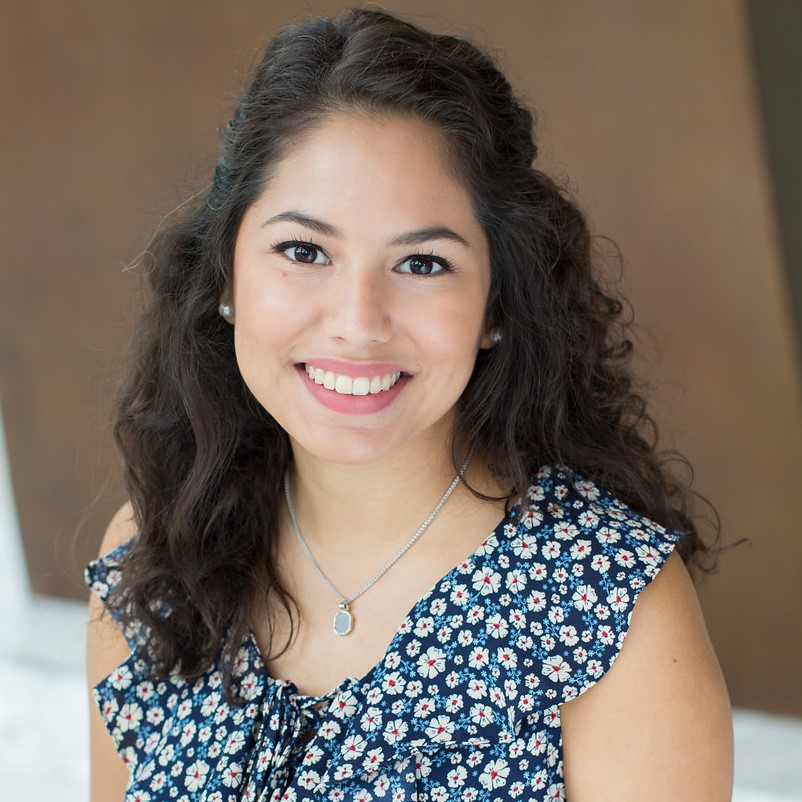Background
In 2017 when Hurricane Harvey struck the Gulf Coast of Texas, various funders, even those with limited experience in disaster philanthropy, recognized their obligation to help mitigate the devastating toll of the disaster on Texans and nonprofit partners. One often-overlooked yet critical tool that the Houston-based Episcopal Health Foundation (EHF) leveraged to support the nonprofit and philanthropic community was data and research. EHF used FEMA data to produce maps and analysis to support local efforts and partnered with Kaiser Family Foundation to conduct rapid-response polling to assess the needs of Texans. The data revealed the significant racial, income, and geographic disparities in Harvey’s impact—exposing the need for recovery efforts to be community-specific and equity-focused. Three years later, those lessons remain cornerstones for effective philanthropic responses an unprecedented disaster—the COVID-19 pandemic.
Challenge
On May 6, 2020, Texas Governor Greg Abbott designated OneStar Foundation to manage the Texas COVID Relief Fund—a statewide coronavirus fund to address critical gaps in community resources in the areas of health, education, and community development. In total, the Texas COVID Relief Fund raised $920,000, while more than 1,000 organizations reached out to express a need for funding due to the pandemic.
While the state saw an outpouring of philanthropic support in the aftermath of Hurricane Harvey, the COVID-19 pandemic was different. The virus and its consequences impacted all Texans in almost all counties—while also impacting almost every corner of the world. Every nonprofit, foundation, small business, corporate donor, and community continues to cope with functioning in the “new normal.”
In response to the overwhelming demand, OneStar prioritized funding for unmet needs of communities that were disproportionately impacted by the pandemic. However, it was difficult to identify exactly which communities these were at the time due to fragmented and inconsistent publicly available data and the diversity of approaches to the local health and economic crisis in each local jurisdiction. OneStar needed to analyze real-time public health data to better see how local communities were impacted differently by the pandemic and identify gaps in local response efforts. OneStar called upon partner organization EHF to conduct a statewide analysis that could identify communities disproportionately impacted by the virus. This data informed critical decisions in the grantmaking process so that finite resources could best respond to the pressing needs of the moment.
The partnership between the OneStar and EHF showcases valuable lessons on the multiple ways data and research can sharpen our ability to respond to complex challenges in the disaster landscape. While philanthropic giving plays an essential role in disaster recovery, the amount of funding a single organization can give to relief efforts was always going to be a drop in the bucket.
Solution
EHF and OneStar worked together to explore publicly available datasets on public health and socioeconomic risk factors. We aimed to objectively identify regions heavily impacted by the virus that were less likely to have sufficient resources to respond to the economic, social, and health challenges posed by the pandemic. Our goal was to create a heat map of Texas by plotting both COVID specific public health indicators alongside resiliency indictors.
| COVID-19 Public Health Indicators | Resiliency Indicators |
| COVID-19 related deaths COVID-19 related hospitalizations | CDC’s Social Vulnerability Index Unemployment Statistics Access to a local philanthropic fund |
We used statistical data on COVID-19 related deaths and hospitalizations as opposed to COVID-case numbers due to the variation of testing capacity across counties. To highlight the socio-economic impact of the pandemic, we used unemployment statistics published by the Texas Workforce Commission and the Center for Disease Control’s Social Vulnerability Index. The CDC SVI includes 15 social variables, including poverty, lack of access to transportation, and crowded housing, that identify areas of high socio-economic insecurity. In short, the CDC has identified these 15 factors play into a community’s ability to prevent human suffering and financial loss in a disaster.
We wanted to know which areas of the state were already capable of raising and distributing philanthropic dollars in their communities to find where our funding would be most needed. We knew from the beginning that this data was not readily available, too hard to compile, and inconsistent. Ultimately, we were able to identify local communities with access to a local COVID-19 relief fund using Candid’s database and aggregated that data to the county level to compare across datasets.
Based on the indicators above, we identified 33 of the 254 Texas counties were highest need (13%), 92 counties were high need (36%), 105 counties were low need (41%), and 24 counties were lowest need (9%). We prioritized funding for regions with large clusters of “highest” and “high” need counties and rural areas with limited access to local COVID philanthropic relief funding.
| Geographic Scope | Funding Approved | Percentage |
| Statewide 3+ Regions 2 Regions 1 Region | $485,000 $200,000 $160,000 $75,000 | 53% 22% 17% 8% |
| Total Funding | $920,000 | 100% |
To reach the most people, we knew we needed to focus on providing grants to organizations which had a history of providing services statewide or across a significant proportion of the state. However, the data allowed us to identify and prioritize smaller regional organizations that cover a few highest need regions.
The analysis provided clarity on the impact of the coronavirus regionally. For example, in July, major metro areas like Dallas and Houston had large numbers of COVID-19 cases while smaller counties in the Rio Grande Valley region had higher rates of COVID-19 deaths, unemployment rates almost double the state average, and relatively fewer philanthropic dollars flowing into the region. This was a similar trend we saw during Hurricane Harvey, in which smaller or more rural communities that were most devastated by the storm received less news coverage and with it less philanthropic support compared to the Houston area.
Insights & Call to Action
We must learn from each disaster to better prepare for the next one. The COVID-19 pandemic taught us a few important things about the current state of data-driven philanthropy in Texas. Our partnership on this endeavor allowed us to envision what the philanthropic community could achieve by using research and data as a grantmaking tool. We draw the following insights from our collaboration:
- The philanthropic sector must increase data transparency.
Our society is built upon incredible diversity and deeply intertwined systems and issues and unfortunately no dataset can provide a full and complete snapshot of this reality. While data will likely always be imperfect, the more we use, aggregate, analyze, and act on data, the better informed our practices and policies will be. Greater transparency can ensure that government, philanthropic funders, and advocacy groups have a clearer picture of grantmaking to better advocate for and invest in communities. Without information on how much funding was available in certain locations and how it was being distributed in real-time, as a state we are passing up an opportunity to stretch and leverage our finite philanthropic dollars as far as they could go. - Data-driven philanthropy can improve equity.
Foundations who desire to make systematic change focused on equity should use data to inform their grantmaking practices and policies, including funding research and evaluation in line with direct services. Research and evaluation can have systemic, community-wide policy impacts when used correctly to inform decision makers. We use research methods to evaluate which programs can successfully be scaled and replicated. However, many nonprofits do not have the time or budget to conduct regional or community-wide impact evaluations—a critical gap that philanthropy can help address.
Data can help us see which communities geographically and demographically are most in need. From data analysis on Hurricane Harvey and COVID, we now know that urban communities draw more attention and donations following a disaster. We can use that information to distribute funding more equitably to regions that are underserved and under resourced. The disparate impact of the COVID pandemic on African American and Hispanic communities was not readily known until we had data to show it. If done correctly, data shows us who, where, and in what way communities are most in need.
Closing
One day we hope to see an interconnected network of funders who collaborate in real-time by
- collecting usable grantmaking data;
- making data discoverable online and openly shared;
- discussing best practices for using data;
- identifying gaps in funding to better leverage dollars.
Research and data-driven grantmaking is one way we have the power to increase equity and demonstrate our resolve to support our communities in need. The Episcopal Health Foundation and OneStar Foundation teamed up to share our experience to start a larger conversation amongst our sector. We encourage you to reach out to us to continue the conversation on how to improve research and data-driven philanthropy in the nonprofit sector.
 Robiel Abraha
Robiel Abraha
Research and Evaluation Officer
Episcopal Health Foundation
 Megan Maldonado
Megan Maldonado
Program Manager, Rebuild Texas Fund
OneStar Foundation
Read More:
- Texans’ Views On The COVID-19 Pandemic. (Published October 2020) The Episcopal Health Foundation conducted a statewide survey of Texans on the impacts of the COVID-19 pandemic. The report highlights how the pandemic is affecting Texans differently depending on household income, race, whether they have health insurance, and many other factors.
- The Impact of COVID-19 on Texas Nonprofits. OneStar Foundation and the United Ways of Texas developed, executed, and analyzed nonprofit surveys to identify the impact COVID-19 has had on the nonprofit sector in Texas.
- The Center for Disaster Philanthropy, a thought leader in disaster philanthropy, and Candid released Philanthropy & COVID-19 in the First Half of 2020 report detailing global giving trends.

